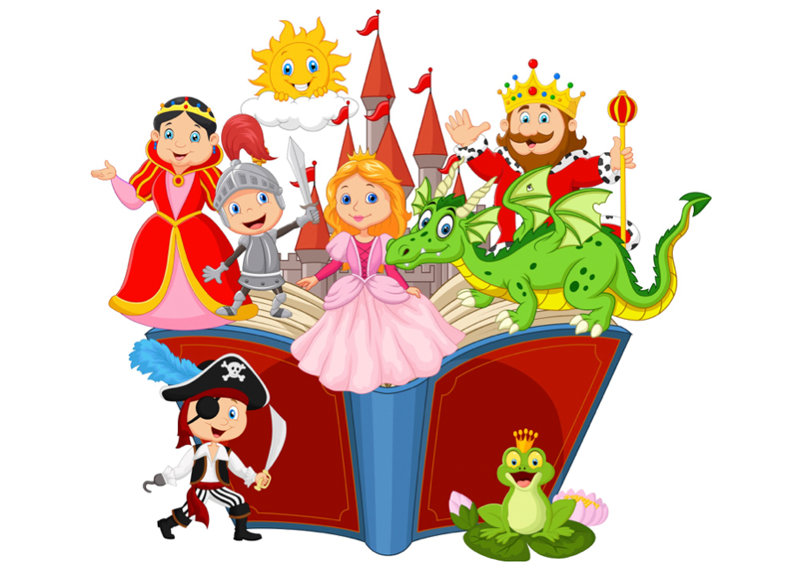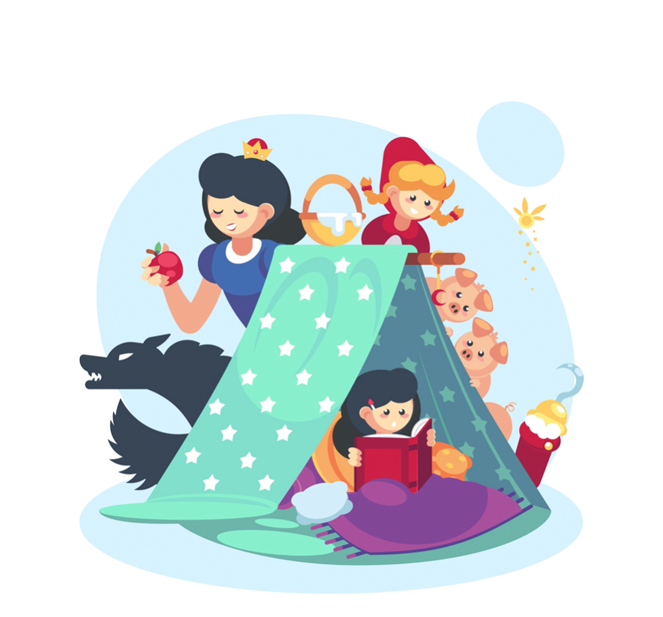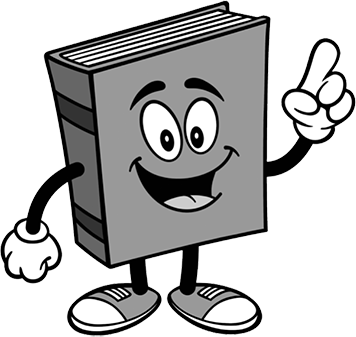WHAT A CHARACTER!
Using Fictional Characters to Help Students Fall in Love with Reading
Introduction | Background Knowledge | Activities | Extensions | Standards

Introduction
Name one of your favorite book characters. This was probably an easy task, with the challenge being having to choose only one. Readers fall in love with book characters. Many readers still remember their first time reading that Charlotte died in Charlotte’s Web by E. B. White. Many fondly remember laughing along with George’s antics in Curious George by H. A. Rey, or more recently Gerald and Piggie in Mo Willems’s Elephant and Piggie series. How many readers wanted to solve mysteries with Frank and Joe Hardy or longed to be a member of the Baby-sitters Club?

Background Knowledge
Characters are an essential element of the fictional story. Through a book’s characters, readers learn good versus evil and can see themselves or whom they would like to be. Characters drive the stories - from their traits to their actions, from their feelings to how they change throughout the book. Readers connect to the characters, which is why so many book series are popular. For example, the Harry Potter series would not be popular without Harry, the boy who lived.
At a basic level, students need to be able to identify the characters in a fictional story. Who are the main characters or the most important characters? Who are the minor characters? How do they fit into the story? Once students can identify the characters, it is time to dig a little deeper and begin to analyze characters. Excellent readers do this intuitively - they question motives, consider actions, and try to make sense of how a character changes and why. Most readers need to be led down this path, but once they are taught, it becomes second nature.
Elements of Character Analysis include:
- Character Identification: telling who the characters are and how each relates to the others.
- Physical Description: describing the characters if the author has provided a physical description.
- Traits and Feelings: identifying and discussing a character's traits and feelings, using direct or indirect characterization.
- Motives: discerning why a character does what he or she does.
- Changes Throughout the Story: identifying and describing if and how a character changes throughout the story and why that change occurs.
We can analyze characters through
- What the author says about them What the characters do and say (actions and reactions)
- What other characters say and think about them
Characterization can be direct, where the author explicitly describes the character, or indirect, where the reader must make inferences.
Character studies and explicit instruction on character analysis can make students more active, engaged readers, contributing to helping them become successful readers.

ACTIVITIES
Selective List of Picture Books with Well-Developed Characters
- Character Traits
- Amazing Grace by Mary Hoffman (ISBN 9780803710405)
- A Bad Case of Stripes by David Shannon (ISBN 9780439598385)
- Ada Twist, Scientist by Andea Beatty (ISBN 9781419721373)
- Hooway for Wodney Wat by Helen Lester (ISBN 9780439200875)
- After the Fall by Dan Santat (ISBN 9781626726826)
- The Paper Bag Princess by Robert Munsch (ISBN 9781773210292)
- Character Feelings
- Rosie Revere, Engineer by Andrea Beatty (ISBN 9781419708459)
- Wemberly Worried by Keven Henkes (ISBN 9780061857768)
- When Sophie Gets Angry….Really, Really Angry… by Molly Bang (ISBN 9780439598453)
- Crankenstein by Samantha Berger (ISBN 9780316126564)
- Bootsie Barker Bites by Barbara Bottner (ISBN 9780698114272)
- Crabby Pants by Julie Gassman (ISBN 9781404874169)
- Character Changes
- Jabari Jumps by Gaia Cornwall (ISBN 9781536202908)
- The Recess Queen by Alexis O’Neill (ISBN 978-0439206372)
- Enemy Pie by Derek Munson (ISBN 9780811827782)
- The Three Little Wolves and the Big Bad Pig by Eugene Trivizas (ISBN 9780689815287)
- Beatrice Doesn’t Want To by Laura Numeroff (ISBN 9780763638436)
- My Rotten Red-Headed Older Brother by Patricia Polacco (ISBN 9780689820366)
Selective List of Chapter Books with Well-Developed Characters
- Restart by Gordon Korman (ISBN 9781338053807)
- Wonder by R. J. Palacio (ISBN 9780375869020)
- Because of Mr. Terupt by Rob Buyea (ISBN 9780375858246)
- Fish in a Tree by Linda Mullaly Hunt (ISBN 9780142426425)
- George by Alex Gino (ISBN 9780545812573)
- Ella Enchanted by Gail Carson Levine (ISBN 9780064407052)
- There’s a Boy in the Girl’s Bathroom by Louis Sachar (ISBN 9780394805726)
- The Mighty Miss Malone by Christopher Paul Curtis (ISBN 9780440422143)
- The Other Boy by M. G. Hennessey (ISBN 9780062427670)
- Maniac Magee by Jerry Spinelli (ISBN 9780316809061)
Use a Series to Highlight Characters
- Elephant and Piggie series by Mo Willems
- Clementine Series by Sarah Pennypacker
- Mr. Putter and Tabby series (each book listed separately) by Cynthia Rylant
- Llama Llama series by Anna Dewdney
- Amelia Bedelia series by Peggy Parish
- Scaredy Squirrel series (each book listed separately) by Melanie Watt
- Bear series by Karma Wilson
Character Charades
- Build excitement in the classroom with a game of Character Charades. Use this as an anticipatory set to the entire unit or an individual lesson, or a quick review at the end of a unit. Students choose a character’s name and act out that character without using words. The team or student who guesses the correct character gets a point. Use familiar literary characters or popular characters from TV shows or movies. During a discussion after the game, talk about how students knew how to act or how they knew which character to guess.
Character Selfies
- Students can analyze character traits in this activity. Identify character traits and provide proof for each one. Add these statements around a photograph, drawing, or illustration of the character.
- Technology Approach
- Use Jamboard (TeachersFirst Review) to make this an interactive activity. The teacher posts a character picture in the middle of the Jamboard (add as an image or as a background) and students can use the sticky note feature to add character traits and proof.
- Students can also use Google Slides (TeachersFirst Review) to create a presentation to highlight character traits using images or text.
- Non-Technology Approach
- Students can use graphic organizers to share information about character traits. These can be printed out and completed on paper. Students can create the character in the center of the page and add traits and proof in the bubbles around the edges.
- Younger students can use facial expressions to visualize the character traits or draw pictures to describe how a character made them feel.
Character Journals
- Students can expand their writing skills as they analyze characters by keeping a journal from a character’s point of view. What would Katniss Everdeen from The Hunger Games write in her journal? How about Mr. Terupt from Because of Mr. Terupt? How does Camilla Cream feel about her stripes in A Bad Case of Stripes?
- Technology Approach
- Use Flipgrid (TeachersFirst Review) to create video journal entries instead of written ones.
- Non-Technology Approach
- Print bullet journal pages for students to add more individuality to their journal entries. Encourage students to doodle, add quotes, moods, and worries in their character journals.

EXTENSIONS
- Rewrite the Story
- Encourage students to take a favorite story or a read-aloud that has been shared with the class and rewrite it to change the main character as in The Three Little Wolves and the Big, Bad Pig. For example, in Hooway for Wodney Wat by Helen Lester, Wodney is a shy and quiet character. He is afraid of Camilla Capybara, and she is the antagonist in the story. How would the story be different if Wodney was strong and brave instead of timid? Students can tell this new story and share their writing with their classmates.
-
Characters on Trial
- Choose a character from a shared literacy experience, either a picture book or a novel, who is not considered a “good” character. Examine the character’s traits, actions, and motivations and then put those on trial. Students work together in small groups to support a position about the character, either for or against. The groups present their arguments to their classmates, who will serve as the jury. For example, in Restart by Gordon Korman, Chase falls off a roof and gets amnesia. Interactions with his peers show him that he was not a nice person prior to his injury. Students write and present their opinions on if Chase should get a second chance and if his classmates should forgive him. To go even further, students could defend their position if Chase has really changed. This activity allows a close look at the text, requires students to look for evidence to support their opinions, challenges students to practice expressing their opinions in writing, and encourages oral language development as students present, discuss, and defend their positions.
- A Fish Out of Water
- What would happen if we took a character from one book and put him or her in another? How would Harry Potter be if he was in Charlotte’s Web? What would happen if Curious George went to play with Gerald and Piggie in Mo Willems’ Elephant and Piggie books? Would the Very Hungry Caterpillar eat The Giving Tree? Facilitate a discussion about how a new, familiar character would impact a favorite story.
- Fakebook
- Create a Facebook-style page for one of a story’s many characters using Fakebook (TeachersFirst review). Other characters’ pages can be set as “Friends” and posts can be added as the story progresses.
CORRELATION TO STANDARDS
-
AASL National School Library Standards
- Inquire Shared Foundation, Think Domain - Learners display curiosity and initiative by: 1. Formulating questions about a personal interest or a curricular topic. 2. Recalling prior and background knowledge as context for new meaning
- Include Shared Foundation, Share Domain - Learners exhibit empathy with and tolerance for diverse ideas by: 1. Engaging in informed conversation and active debate. 2. Contributing to discussions in which multiple viewpoints on a topic are expressed.
- Explore Shared Foundation, Think Domain - Learners develop and satisfy personal curiosity by: 1. Reading widely and deeply in multiple formats and write and create for a variety of purposes
-
ISTE Standards for Students
- Innovative Designer - 4d. Students exhibit a tolerance for ambiguity, perseverance and the capacity to work with open-ended problems.
- Global Collaborator - 7b. Students use collaborative technologies to work with others, including peers, experts or community members, to examine issues and problems from multiple viewpoints.
